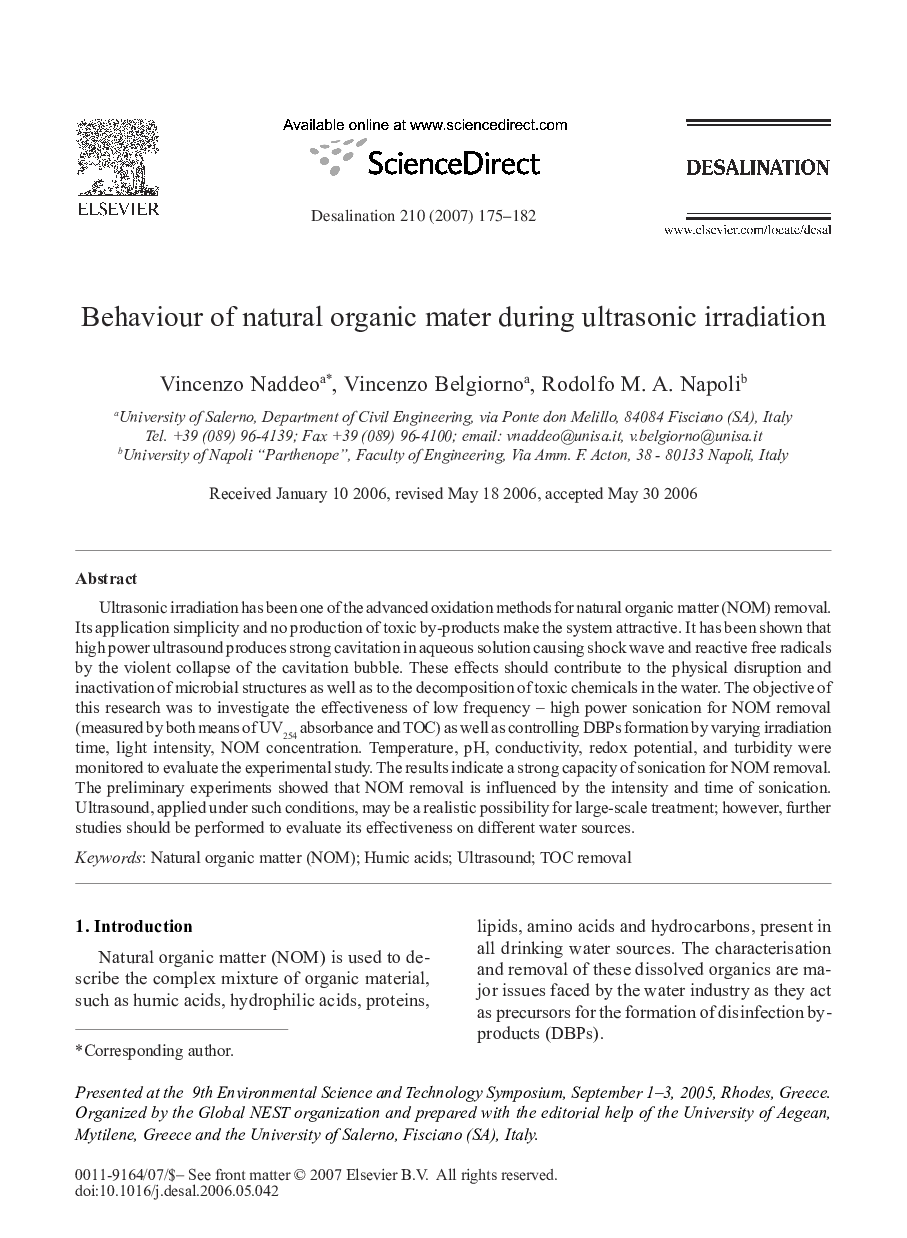| Article ID | Journal | Published Year | Pages | File Type |
|---|---|---|---|---|
| 628063 | Desalination | 2007 | 8 Pages |
Abstract
Ultrasonic irradiation has been one of the advanced oxidation methods for natural organic matter (NOM) removal. Its application simplicity and no production of toxic by-products make the system attractive. It has been shown that high power ultrasound produces strong cavitation in aqueous solution causing shock wave and reactive free radicals by the violent collapse of the cavitation bubble. These effects should contribute to the physical disruption and inactivation of microbial structures as well as to the decomposition of toxic chemicals in the water. The objective of this research was to investigate the effectiveness of low frequency - high power sonication for NOM removal (measured by both means of UV254 absorbance and TOC) as well as controlling DBPs formation by varying irradiation time, light intensity, NOM concentration. Temperature, pH, conductivity, redox potential, and turbidity were monitored to evaluate the experimental study. The results indicate a strong capacity of sonication for NOM removal. The preliminary experiments showed that NOM removal is influenced by the intensity and time of sonication. Ultrasound, applied under such conditions, may be a realistic possibility for large-scale treatment; however, further studies should be performed to evaluate its effectiveness on different water sources.
Related Topics
Physical Sciences and Engineering
Chemical Engineering
Filtration and Separation
Authors
Vincenzo Naddeo, Vincenzo Belgiorno, Rodolfo M.A. Napoli,
